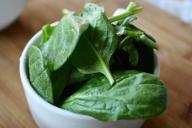Ginger is a herbaceous plant from Asia. Its root is used as a seasoning for various dishes, as well as to give a spicy note to drinks.
Beneficial features
This helps protect the body from developing a range of diseases, including arthritis and certain types of cancer. Ginger reduces the risk of stroke and is also beneficial for people with diabetes. It helps lower cholesterol levels, which may protect against heart disease.
In combination with garlic and lemon, ginger root helps with seasonal respiratory infections, which is why it is included in many preparations for the treatment of flu and colds.
Antispasmodic. A decoction of the rhizome relieves spasms of the smooth muscles of the internal organs, reduces the sensitivity of pain receptors.
The root crop facilitates the digestion of food, stimulates the production of gastric juice, improves appetite. With dyspeptic disorders, relieves symptoms and pain. Protects the mucosa from the effects of the bacterium Helicobacter pylori, which causes gastritis and ulcers, has a positive effect on the intestinal microflora, and reduces gas formation.

How to eat ginger
Many people peel the ginger before use, but as it turns out, most of the medicinal properties remain in the peel.
The root is used fresh, pickled, dried. It is added to tea, meat dishes, vegetable salads, served with sushi. Confectioners love the spice for the savory taste it gives to baked goods, and brewers make the original ginger beer.
What is the best form of ginger
Of course, it is most useful to use fresh ginger roots. It is important that the ginger is fresh. This means that the root crop should not have mold spots or be excessively wrinkled and dry.









